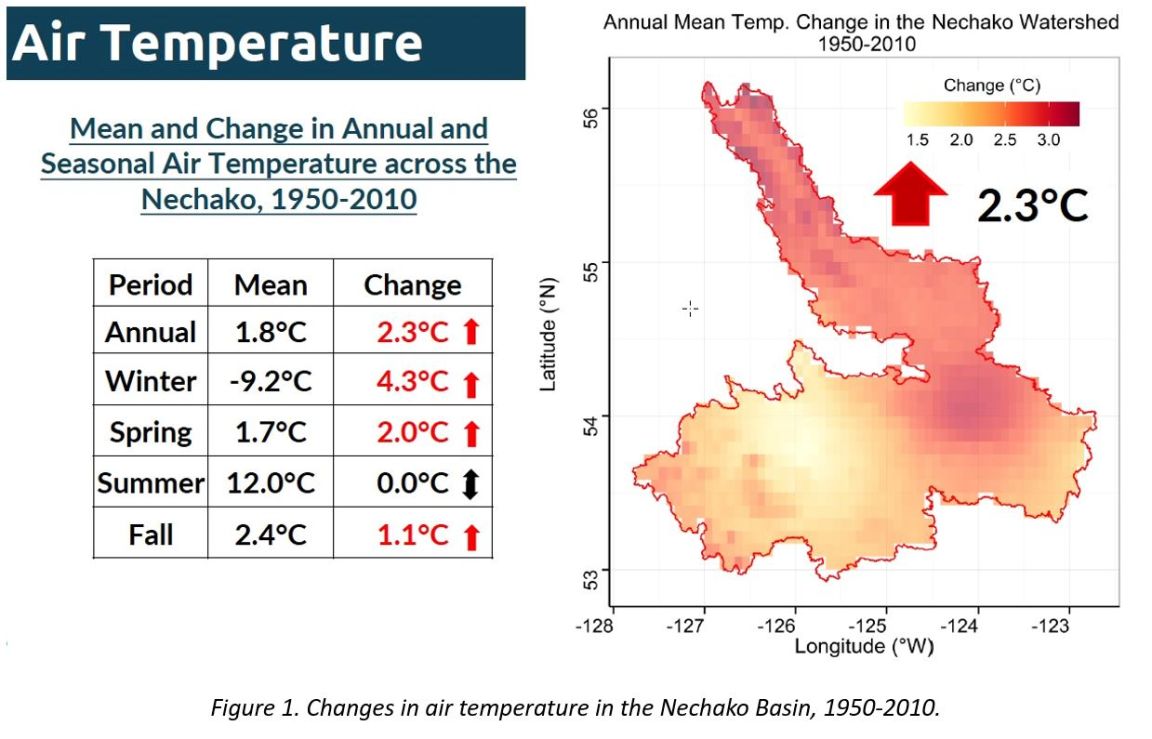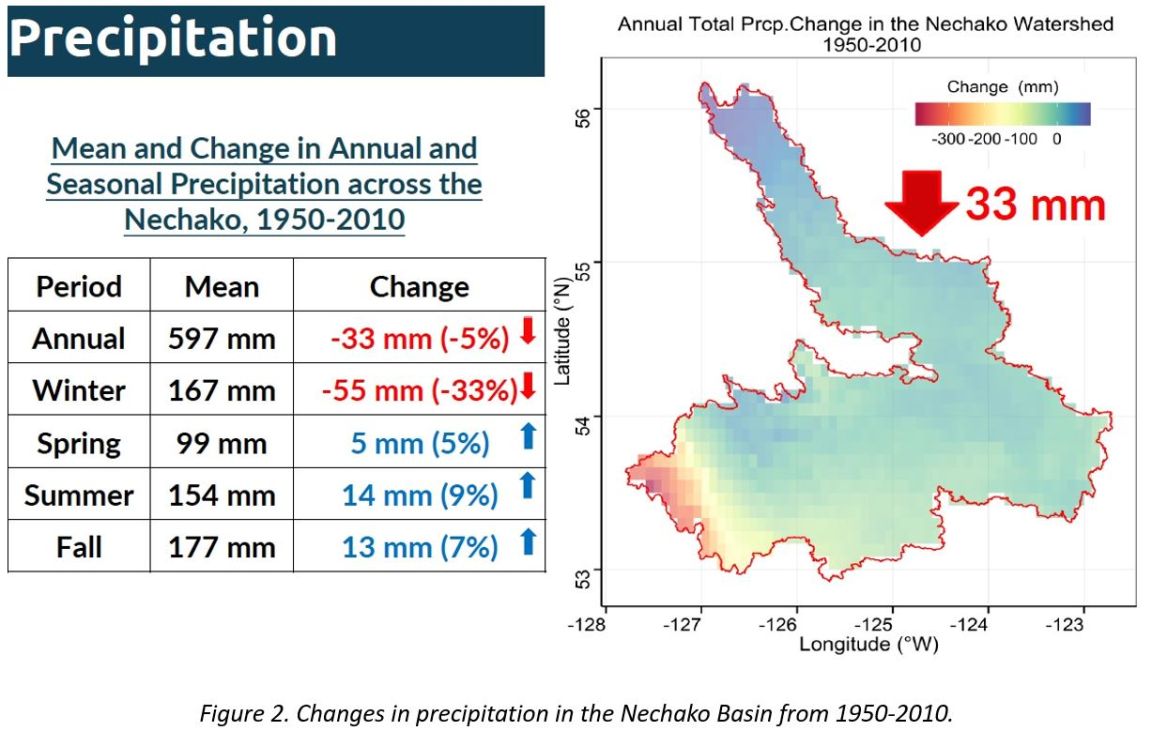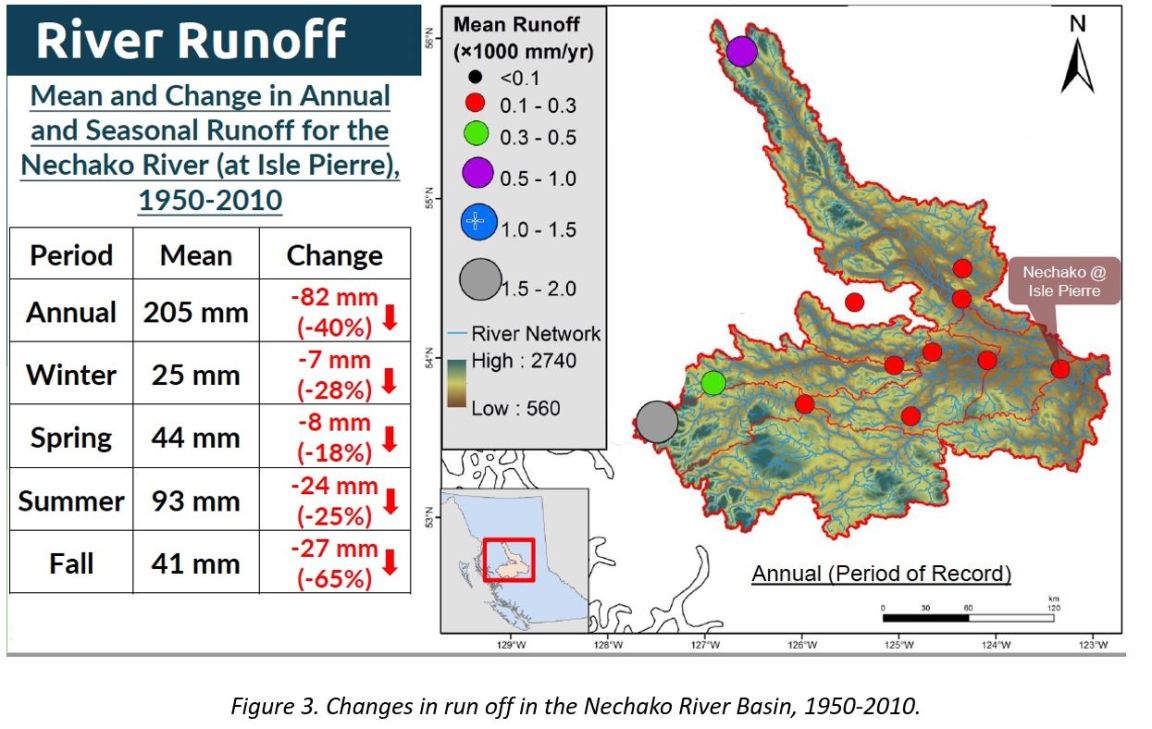Through our examination of historical climate data we have noted that there has been an increase in average air temperature of 2.3o C the Nechako River Basin between 1950 and 2010. The changes in temperature were not uniform across the watershed with warmer temperatures in the northern regions (Figure 1). We also noted that the largest increases occurred in the winter, suggesting that a phase shift in precipitation is occurring within the basin whereby some of the precipitation is falling as rain instead of snow.
When we examined precipitation over the same period we noted that there has been about a 5% decrease in annual precipitation. As with temperature, the changes were not uniform across the watershed. We noted greater decreases in the south western regions (where the glaciers are). Furthermore, the biggest drop in precipitation was in the winter (33%) which raises concerns as this is when water is stored water in the form of snow and ice at higher elevations (Figure 2).
In response to the observed trends in air temperature and precipitation, and in addition to flow regulation, we have seen significant declines in runoff since 1950 (Figure 3). The observed reductions that are independent of regulation in systems such as the Stuart, Nautley and Stellako are pointing to a general trend of reduced availability of water that is basin-wide. This is of concern due to the potential implications for water-dependent resource sectors such as fisheries (e.g., salmon), tourism, recreation, agriculture, mining, potential gas extraction, and hydro-electric power generation
With the results of this research, and in conjunction with Dr. Margot Parkes from Theme 3, we examined the potential implications of climate change on resource development in the Nechako watershed. Our first workshop explored how climate change could affect resource development in this region. In the second workshop we developed a range of future scenarios that could plausibly come to bear – links to workshops.
Research papers from work related to Theme 1 can be found on our Publications page


